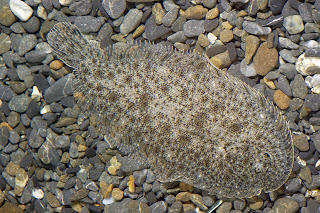Viewed from above, a sole looks like many other bottom-living fish, but appearances can be deceptive. A closer look reveals that the sole’s body is specially adapted for a life spent lying on its side.
Soles are members of a widespread group of fish known as flatfish. Like many other types of flatfish—such as plaice and halibut—soles are highly prized as a food for humans. Flatfish have evolved to spend their lives on the seabed. Other fish lie on the bottom, too, but they rest on their bellies. Flatfish spend their adult life lying on their side instead.
If a fish lies on its side on the bottom, then one of its eyes—the one on the bottom-facing side of the head— is in contact with the seabed. It cannot be used to see things in the water, such as predators or prey. Flatfish have solved this problem, however. Although they lie on their side, both their eyes are on the same side of the head—the side that faces upward.
Horizontal Living
Soon after a sole is born, its larva (young) stage looks similar to the larva of most other fish. But when the baby sole is still between 0.04 and 0.1 inch long, the left eye begins to move. It migrates right over the top of the head and ends up on the other side. As the change is being completed, the young sole sinks to the bottom to lie on its blind side. From then on, it will live and swim in this horizontal position. In keeping with such a lifestyle, the skull bones,muscles, fins, nerves, mouth, teeth, coloration, and other features all gradually undergo changes. These make it possible for the fish to live the rest of its life lying on its left side.









0 comments:
Post a Comment